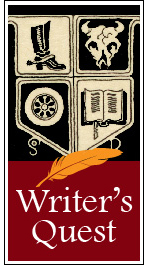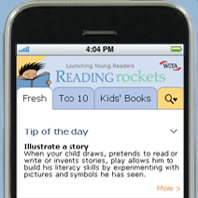 Occasionally, those of us who work in digital media can get so caught up in the excitement of exploring the “new literacies” that make up our 21st century educational landscape, that it can be easy to lose sight of the fundamental problem of not being able to read.
Occasionally, those of us who work in digital media can get so caught up in the excitement of exploring the “new literacies” that make up our 21st century educational landscape, that it can be easy to lose sight of the fundamental problem of not being able to read.
The truth is, for both children and adults, illiteracy is still a major issue worldwide. According to LitWorld, “nearly 1 billion people entered the 21st century unable to read a book or sign their name.” The implications of a statement like that extend far beyond the classroom or the living room. Admittedly, I am a child of the 1980s — I remember all too well being told by LeVar on Reading Rainbow that “Reading is Power!” But that simple message still holds true today. For many people throughout the world, the ability to read and write means empowerment — literacy provides access to jobs, can incite social change, and may often equate survival. LitWorld presents us with another staggering statistic: nearly 171 million children could be lifted out of poverty if they left school with basic reading and writing skills.
This month, LitWorld asks us to return to the fundamentals and sit down to read something aloud to a child as a part of the International Literacy Rally, World Read Aloud Day. On March 9th, people across the world will participate in this event by reading with loved ones and organizing or joining community reading events. For those of us in New York City, there will be a 24-hour Read Aloud Marathon in Times Square.
LitWorld works with various partners in teaching and learning to promote literacy worldwide. Similar to our own focus here at the Joan Ganz Cooney Center, LitWorld’s goal is to find effective and sustainable approaches to literacy development for learners wherever they might be. LitWorld is committed to “stepping outside the boundaries of school and reaching people where they are,” as well as “blurring the divide between home and school and where learning happens.” Using both print and digital materials, they aim to provide access to literature for people worldwide.
So it seems that a question for those of us researching children’s learning in our digital age is: How we can integrate effective approaches to literacy learning into the realities of where and how people are actually reading? Learning may be taking place across various environments with different teachers, including parents or other family members, and with any variety of print or technological platforms in play. For many American children growing up now, this may mean learning how to read on iPads or Kindles, with the supplement of video games or shows like Sesame Street, while for other cultures, literacy development may follow other technological trends. There is a lot to be done to create solutions to the problem of 1 billion non-literate people, but as we work towards our goal, it’s helpful to be reminded of why we’re doing it.
Learn more about World Read Aloud Day and spread the word.




